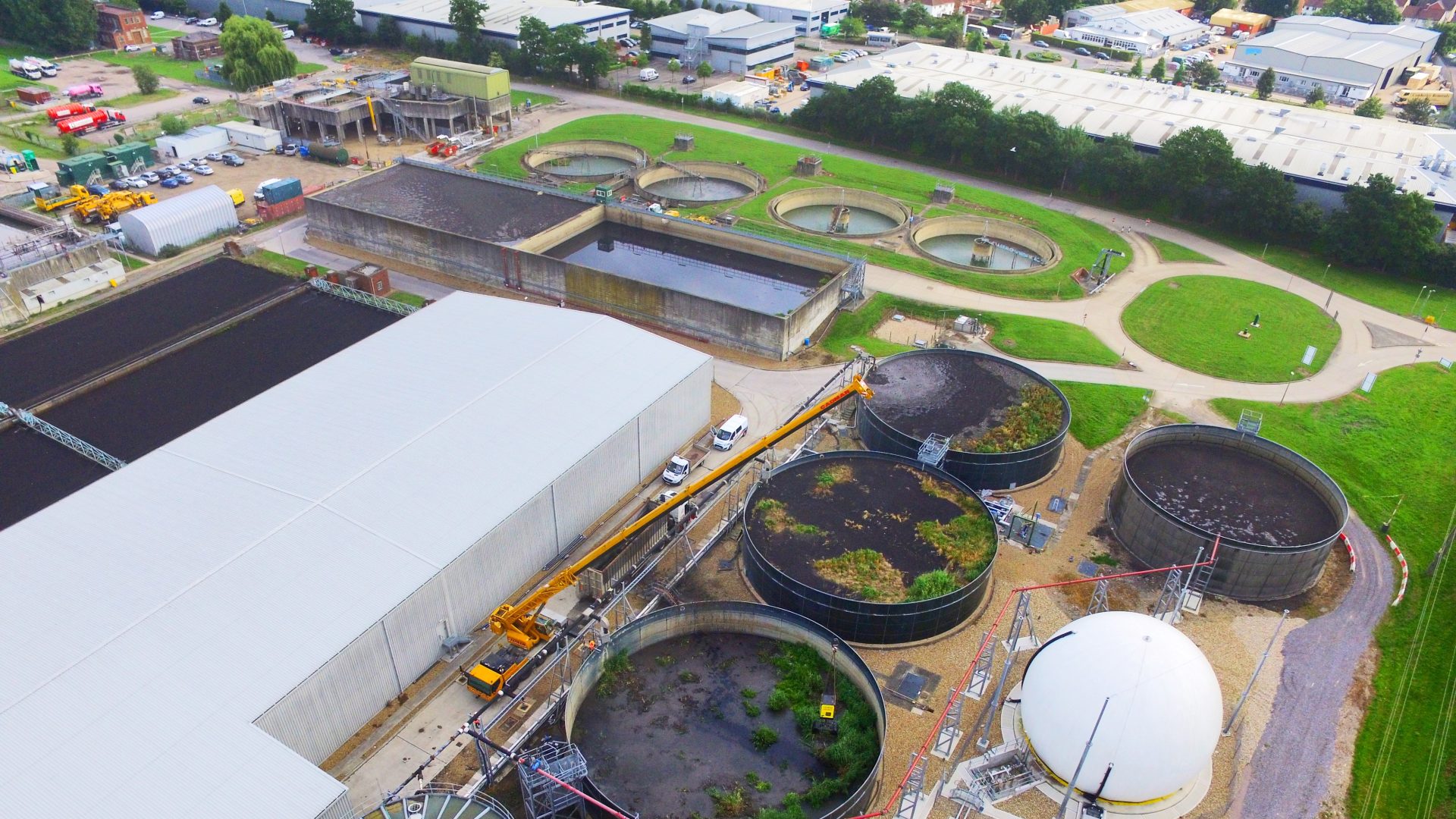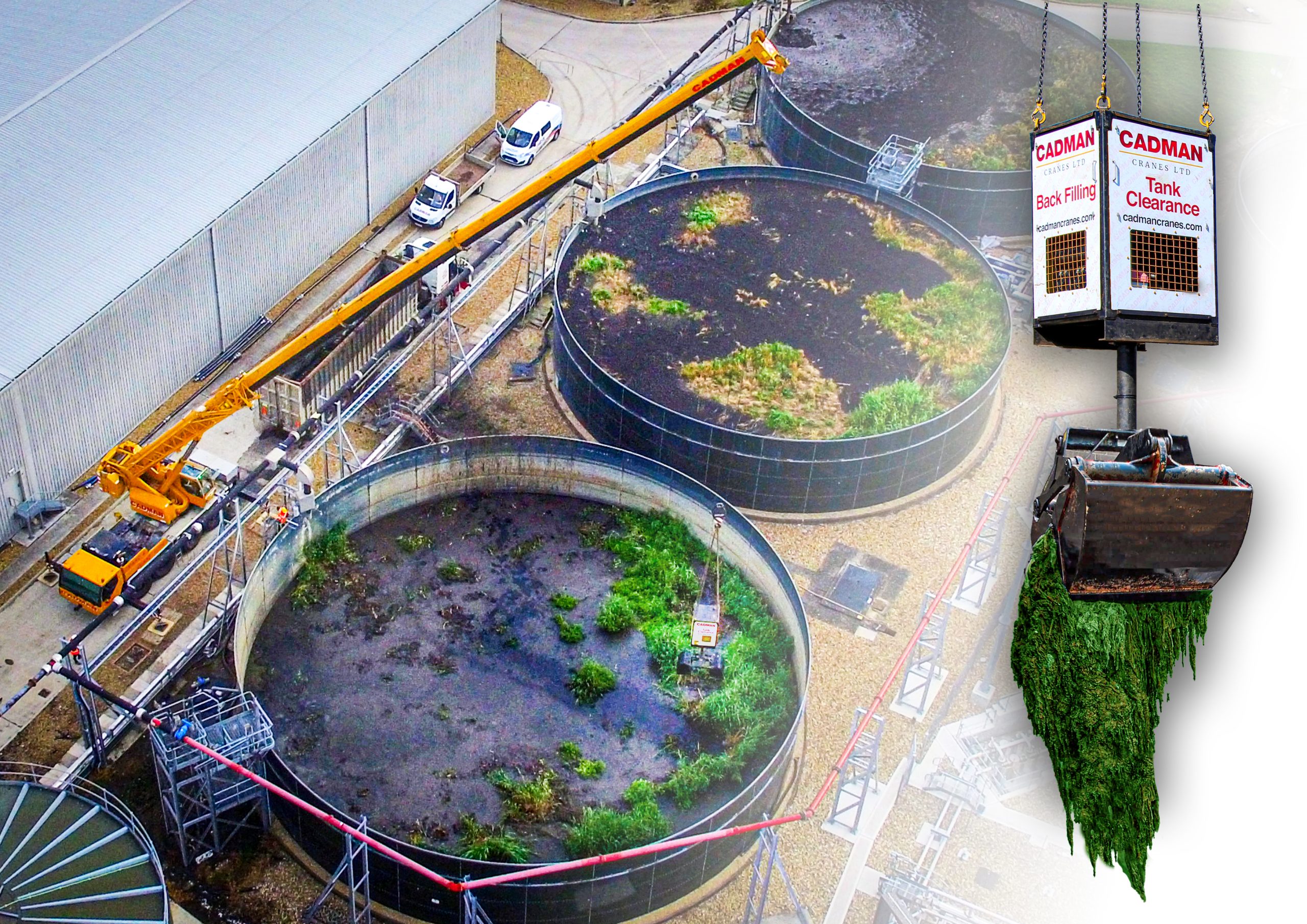In the wastewater recycling industry, maintaining the cleanliness and efficiency of tanks is essential to the health of the entire system.
Wastewater treatment plants, sewage facilities, digester tanks, settlement tanks and aeration tanks all face the challenge of accumulating debris that can compromise their functionality. Cadman Cranes offers an innovative solution to this problem with its custom-designed grab attachment. According to Cadman, this cutting-edge tool that sets the highest standard in tank clearance is ideal when used as part of the company’s Contract Lift solution.
The growing problem of non-flushable waste
One of the most persistent issues in wastewater management is the infiltration of non-flushable items, particularly wet wipes. Despite many being labelled as “flushable,” these products do not break down like toilet paper and can cause significant blockages in wastewater systems. According to Water UK, wet wipes are responsible for 300,000 blockages in UK sewers every year, contributing to the formation of fatbergs—congealed masses of fat, oil, and non-biodegradable solids—that can be as large as a bus. The annual cost of clearing these blockages is estimated to be around £100 million.
This highlights the critical need for effective removal methods in wastewater systems to prevent such costly and environmentally damaging blockages. Cadman Cranes says their grab attachment offers an efficient and safe solution for tackling this growing issue.
Innovative grab attachment for tank clearance
Cadman Cranes’ grab attachment is designed specifically for the complex needs of wastewater management. Suspended from the hook of mobile cranes, this remote-controlled hydraulic power pack can reach distances of up to 60 meters, which the company says makes it ideal for accessing hard-to-reach areas within tanks. It is capable of handling a wide variety of materials, including sewage waste, sludge, grit, mud, rag and sand. With the ability to clear up to 100m³ of material per day, this grab attachment is ideal for facilities that require regular tank cleaning, maintenance, or dredging.
Cadman says the system is particularly advantageous because it allows operations to continue in a live environment, thereby avoiding the need for confined space entry, expensive drain-downs, or system isolations. This not only enhances safety but also reduces downtime, ensuring that tanks are quickly returned to service.
A commitment to safety and efficiency
The company says that safety is at the core of their operations. The grab attachment is remotely operated, eliminating the need for personnel to enter potentially hazardous confined spaces, where exposure to harmful gases or other dangers is a concern. The operator has full precision control over the grab, minimising the risk of damage to tank walls or internal equipment. Cadman says their experienced and certified team ensures that the grab is used safely and effectively throughout the cleaning process.
According to the company, the grab attachment also offers significant efficiency advantages over traditional tank cleaning methods. With its remote operation and high capacity, it enables faster cleaning times, which in turn reduces the downtime of the tanks and cuts overall costs for the facility. The precision and power of the grab also mean that even the most stubborn materials, including non-flushable fabrics and other build-ups commonly found in wastewater treatment by-products, can be removed quickly and thoroughly.
Project Spotlight: Aeration Tank Refurbishment
An example where this specialist grab was particularly effective was the refurbishment of an aeration tank which required a delicate balance of maintaining operations while executing extensive upgrades.
The challenge involved refurbishing eight aeration grids, removing grit and rag from the tank’s bottom, and keeping the tank operational throughout the project.
Cadman Cranes’ 60t crane was utilised to individually remove each aeration grid, placing them on bearers for refurbishment. The next step was to tackle the removal of solid waste, so our bespoke hydraulic grab was attached to the crane hook – an essential feature, given the limitations of traditional excavating machinery.
Operated via the hydraulic power pack and remote control, precise control was achieved from an access platform. After each grid was refurbished, it was replaced, and the process was repeated for the remaining grids. The entire operation was managed as part of a Contract Lift package, ensuring efficiency, safety, and customer peace of mind.




